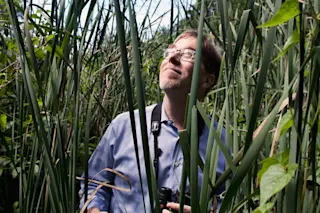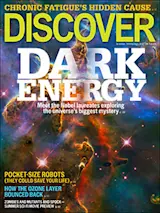Growing up in southern Vermont, Richard Prum developed an ear for birdcalls and learned from the ladies of the local garden club how to tell a warbler from a migratory hawk. Opening a field notebook at random, the Yale University evolutionary ornithologist puts his finger on the day — Nov. 17, 1974 — when he first went bird-watching at the ocean and added 20 new species to his “life list,” bringing the count to 182. That day in the seventh grade, he says, “was the greatest of my life. I’ve spent a huge amount of effort reliving that in greater depth.”
The thrill of the hunt has never faded. After graduating from Harvard in the 1980s, he set off to study South American manakins, whose courtship behaviors had never been fully described. He spent his graduate school career, and many years beyond, constructing a family tree showing how every species ...















